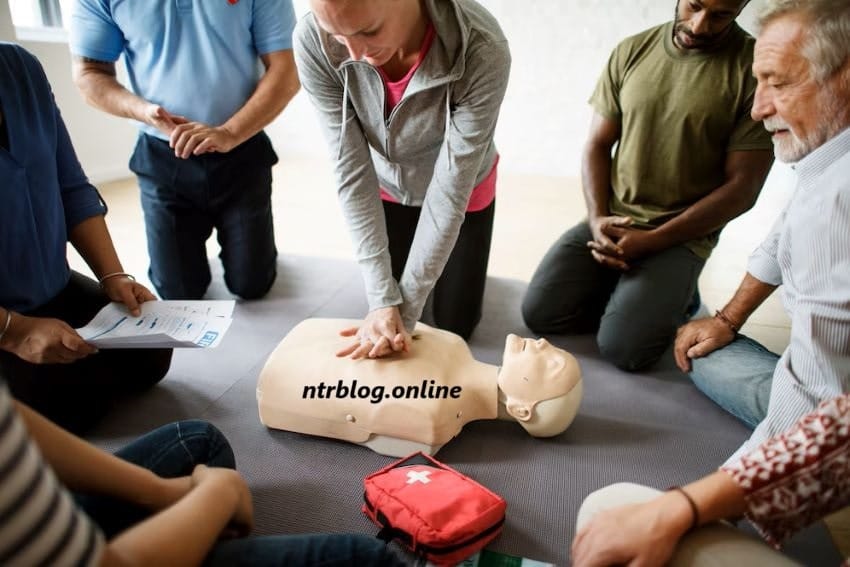Life support systems are crucial medical tools that step in when the body can no longer function on its own. These interventions can buy time for the body to recover, stepping in for organs that are struggling or have failed. Whether it’s mechanical ventilation to help someone breathe, CPR to restart a heart, or dialysis to replace kidney function, life support acts as a bridge when the body Is in crisis. However, the decision to begin, continue, or stop life support is one of the most personal and complex decisions anyone might face.
Table of Contents
What is life support?
- At its core, life support refers to medical procedures designed to sustain life when critical body functions can no longer do so. This support is often temporary, providing help until the body is strong enough to manage on its own again. But it’s not always a sign that recovery is impossible. Many people come off life support and regain a quality of life, but there are also situations where the body does not recover, requiring ongoing support for a long time.
- Making decisions about life support isn’t easy. It’s important to weigh the benefits and the difficulties that come with each type of treatment, and to fully understand how these interventions might impact you or your loved one. Life support can bring relief and hope for recovery, but it can also come with burdens, especially if it prolongs suffering or extends a life when there is little chance for meaningful improvement.

When is life support started?
- Healthcare providers will step in with life support as soon as it’s necessary, provided there are no instructions against it. But there are situations where life support won’t be initiated. If a person has requested not to receive these interventions through legal documents like a living will, or if family members decide against it on their behalf, providers will respect those choices.
- Sometimes, even though the body is failing, life support might not provide real benefit — it could even prolong suffering. On the other hand, for some people, these procedures can give them time to recover and return to a good quality of life. Each case is unique, and the decision is always influenced by the individual’s circumstances and values.
When is life support stopped?
- For some people, life support can be a long-term necessity. Doctors closely monitor whether these treatments are helping the patient recover, or if they are only maintaining the body without a real chance for improvement. When it becomes clear that the person is unlikely to recover meaningful function, families and caregivers often face the tough choice of whether to stop life support.
- Choosing to withdraw life support is never easy, but it’s an important option when the treatments no longer serve a beneficial purpose. It’s crucial to understand that stopping these interventions doesn’t cause death—the underlying illness or condition does. The decision to stop life support is deeply personal, but it’s both legally and ethically valid to let go of treatments that are no longer Improving the situation.
Procedure Details:
- When we think about life support, many of us immediately imagine a ventilator or some other machine keeping someone alive. But life support is a much broader concept—any medical intervention that sustains the body’s essential functions can be considered life support. There are several different forms, each designed to assist a specific organ or system when it can no longer function properly on its own.
Mechanical Ventilation:
- Mechanical ventilation is perhaps the most well-known form of life support. It steps in when the lungs are unable to breathe on their own, whether due to illness, injury, or another condition. A ventilator pushes air into the lungs through a tube that’s inserted into the windpipe (a process known as intubation). This can be a temporary solution, giving the body time to recover, or it can be used for longer periods if the damage to the lungs is permanent.
- For people nearing the end of life, ventilation might not offer much beyond prolonging the inevitable. While it can keep air flowing, it won’t fix the underlying problem that’s causing the person’s decline.
Extracorporeal Membrane Oxygenation (ECMO):
- ECMO takes support a step further than a ventilator. While a ventilator moves air into the lungs, ECMO actually oxygenates the blood outside the body. The blood is pumped through a machine that adds oxygen and removes carbon dioxide, and then it is returned to the body.This advanced technique can be life-saving for people with severe lung or heart failure, but it’s typically only used in critical, short-term situations.
Cardiopulmonary Resuscitation (CPR):
- CPR is an emergency life-saving technique used when someone’s heart or breathing stops. It can involve chest compressions, electric shocks (defibrillation), and medications to try to restart the heart and maintain circulation. In sudden, acute situations like a heart attack or drowning, CPR can make all the difference. However, its effectiveness decreases dramatically in people who are already critically ill or nearing the end of a terminal illness. In those cases, CPR may offer only a slim chance of recovery.
Automated External Defibrillator (AED):
- An automated external defibrillator (AED) is a portable device used to treat sudden cardiac arrest. When a person’s heart rhythm becomes dangerously irregular, the AED can analyze the heartbeat and deliver a shock to help restore a normal rhythm. This device is often found in public places and can be used by bystanders in an emergency before professional medical help arrives.
Artificial Nutrition and Hydration:
- When a person can’t eat or drink naturally, artificial nutrition and hydration can step in to provide essential nutrients and fluids. This is often done through a feeding tube inserted into the stomach or directly into the bloodstream. While it can sustain life for people recovering from an illness or surgery, long-term use might be necessary for those with chronic or irreversible conditions. In some cases, though, it doesn’t improve the underlying condition or enhance the person’s quality of life.
Kidney Dialysis:
- Dialysis is life support for the kidneys. When the kidneys fail, dialysis filters out waste and excess fluids from the blood, mimicking the function of healthy kidneys. While dialysis can help many people live longer, it’s not a cure, and some people with other serious health issues may find that the burdens of the treatment outweigh the benefits. It’s a critical lifeline for many, but like other forms of life support, it comes with difficult choices about quality of life and long-term viability.

FAQ’s:
What is Basic Life Support?
A. Basic Life Support (BLS) refers to the immediate care provided in emergencies, often before more advanced medical help arrives. This can include performing CPR (cardiopulmonary resuscitation), helping someone who is choking, or providing rescue breaths when someone’s breathing or heart has stopped. BLS is critical in situations like cardiac arrest, respiratory failure, or when the airway is blocked.
The beauty of BLS is that anyone can learn these techniques, not just healthcare professionals. With proper training and certification, everyday people can step in during an emergency to make a real difference. Whether it’s calling for help, performing chest compressions, or assisting someone struggling to breathe, BLS can greatly improve the chances of survival and recovery.
What is Advanced Life Support?
A. Advanced Life Support (ALS) builds on the skills taught in BLS, but it goes further. ALS is used by healthcare providers in more serious situations, often involving life-threatening cardiac emergencies. Beyond basic CPR, ALS includes techniques like administering medication, using advanced airway management, and monitoring heart rhythms with specialized equipment. ALS requires a higher level of training and is usually performed by doctors, paramedics, or other trained professionals.
There is also a version of ALS tailored specifically for children, called Pediatric Advanced Life Support (PALS). While many of the principles are similar to those used for adults, children’s bodies are smaller and more delicate, so healthcare providers must adjust their techniques accordingly. Whether for adults or children, ALS ensures that patients receive the highest level of care in critical moments, increasing their chances of survival and recovery.


